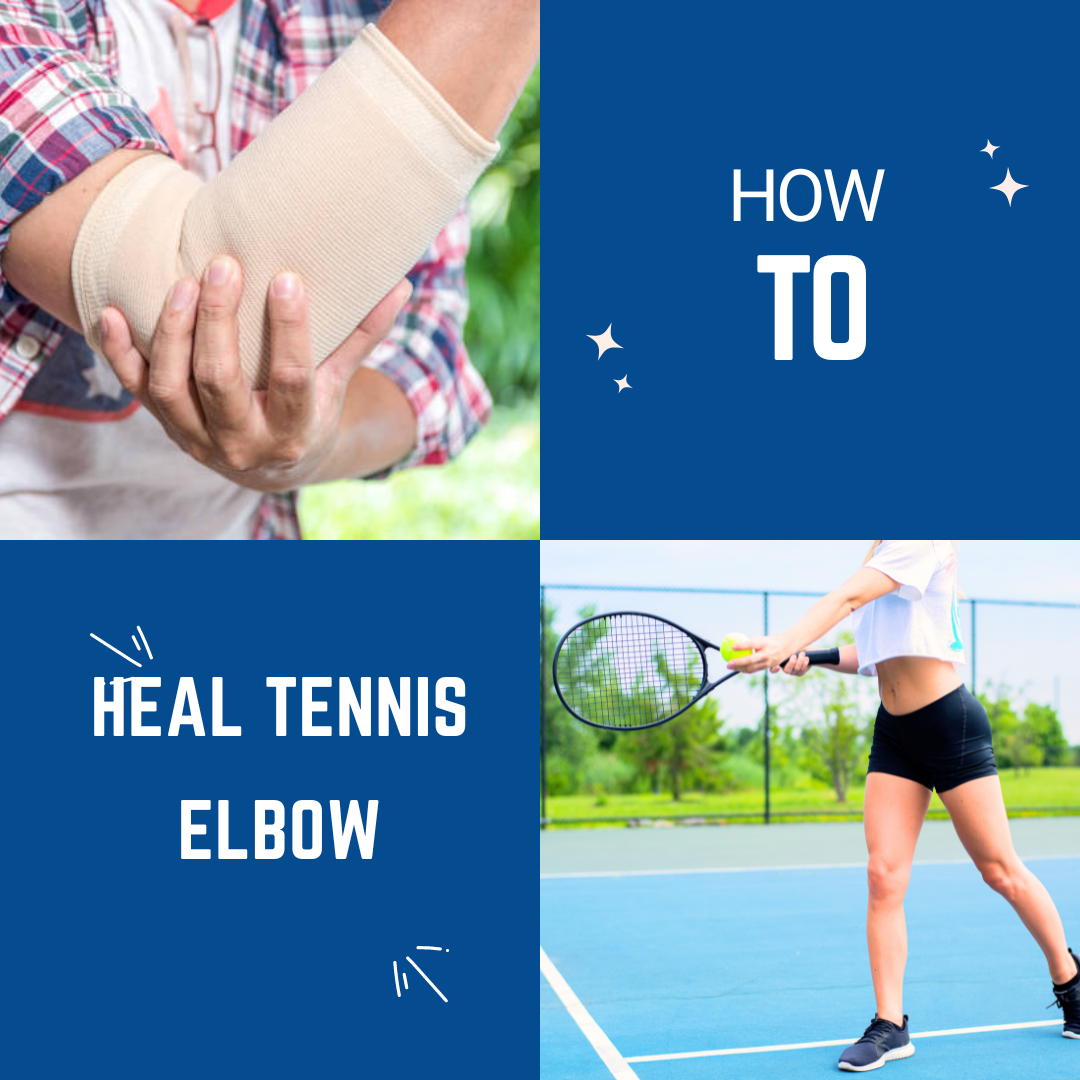Comprehensive Guide: How to Heal Tennis Elbow
Understanding Tennis Elbow
Tennis elbow, medically known as lateral epicondylitis, is a common condition characterized by pain and inflammation in the outer part of the elbow. Despite its name, it’s not exclusive to tennis players; anyone engaging in repetitive arm movements can develop this condition. But how to heal tennis elbow?. The pain typically radiates from the outside of the elbow to the forearm and wrist, making everyday activities challenging.
Symptoms of Tennis Elbow
Identifying the symptoms of tennis elbow is crucial for effective management. Common signs include:
Pain:
Persistent pain on the outer side of the elbow, worsening with gripping or lifting.
Weakness:
Difficulty in gripping objects or performing simple tasks.
Stiffness:
Limited range of motion in the affected arm.
Tenderness:
Sensitivity to touch around the elbow joint.
Natural Remedies for Tennis Elbow Relief
1. Rest and Immobilization
Rest is essential for allowing the injured tendons to heal. Avoid activities that aggravate the pain, and consider immobilizing the elbow with a brace or splint to reduce strain.
2. Ice Therapy
Applying ice to the affected area helps reduce inflammation and alleviate pain. Wrap ice packs in a cloth and apply them to the elbow for 15-20 minutes several times a day.
3. Compression
Using a compression bandage or brace can provide support to the elbow, reducing swelling and promoting healing. Ensure that the compression is not too tight to avoid restricting blood flow.
4. Elevating the Arm
Keeping the affected arm elevated above heart level can help reduce swelling and relieve pressure on the elbow joint. Use pillows or cushions to support the arm while resting.
5. Physical Therapy Exercises
Gradual rehabilitation through specific exercises can strengthen the muscles surrounding the elbow joint and improve flexibility. Consult a physiotherapist for personalized exercise routines tailored to your condition.
6. Ergonomic Adjustments
Evaluate your workspace and daily activities for ergonomic improvements. Proper posture and ergonomic tools can reduce strain on the elbow and prevent recurrence of tennis elbow.

Dietary and Lifestyle Tips for Healing Tennis Elbow
1. Anti-Inflammatory Diet
Include foods rich in omega-3 fatty acids, antioxidants, and vitamins in your diet to reduce inflammation and support healing. Incorporate salmon, walnuts, berries, leafy greens, and turmeric into your meals.
2. Hydration
Stay adequately hydrated to maintain joint health and promote tissue repair. Aim to drink at least eight glasses of water daily to keep your body well-hydrated.
3. Avoid Overuse
Refrain from repetitive arm movements or activities that strain the elbow joint. Pace yourself during physical tasks and take regular breaks to prevent overuse injuries.
4. Stress Management
Chronic stress can exacerbate inflammation and delay healing. Practice stress-relief techniques such as meditation, yoga, or deep breathing exercises to promote relaxation and accelerate recovery.
Seeking Professional Treatment
If conservative measures fail to alleviate the symptoms of tennis elbow, consult a healthcare professional for further evaluation and treatment options. In some cases, corticosteroid injections or surgical intervention may be necessary to address severe pain and dysfunction.
Conclusion
Healing tennis elbow requires a comprehensive approach encompassing rest, therapeutic interventions, lifestyle modifications, and dietary adjustments. Some time it lasts for long period. By implementing these natural remedies and lifestyle changes, individuals can effectively manage pain, promote healing, and prevent recurrence of this debilitating condition.

